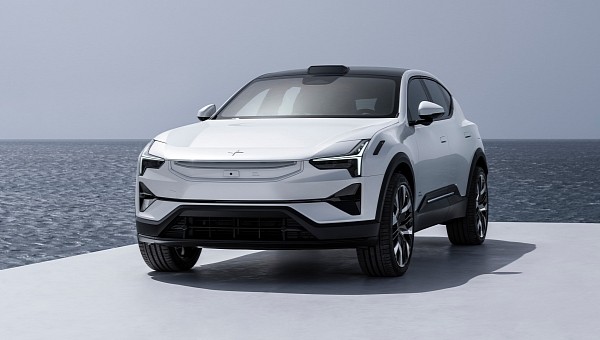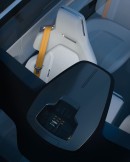Polestar recently announced it is expanding its collaboration with Luminar and pursuing the integration of long-range LiDAR into future models. This provides a solid foundation to integrate Luminar’s 3D laser scanning technology and continue innovating.
However, the Swedish carmaker might be going about the next generation of EVs the wrong way. This is showcased by Tesla (arguably the most famous player in the electric mobility market) taking a step away from LiDAR technology.
But before we get to why this is happening, we must first talk about how it works. The basic principle of LiDAR is similar to that of radar or sonar, with the key difference being that it uses a pulse of light emitted by a laser instead of sound or radio waves.
In other words, the system sends out a pulse of light and waits for it to return, upon hitting an object. It then measures the amount of time taken for this to happen to determine the distance between the emitter and the object.
This makes LiDAR uniquely good in applications such as large-area mapping using aerial vehicles. However, according to both Tesla CEO Elon Musk and former Senior Director of Artificial Intelligence Andrej Karpathy, who left Tesla in July 2022, it is not the best approach for autonomous vehicles, due to both its price and limitations.
To prove this point, Karpathy used an analogy of how we rely on purely visual information rather than shooting lasers out of our eyes to get a perception of the world around us. Our depth perception comes from the fact that our brains use the images received from both eyes to triangulate depth as well as rely on the motion of the surrounding objects.
According to him, a neural network can be trained to process information in the same way and become quite adept at this job. Granted, it is not an easy process, but steady progress is being made toward making a self-driving system capable of relying on passive vision.
There are also key advantages to using visual recognition, which are absolutely mandatory if self-driving vehicles will become commonplace. He even gives a few examples explaining this by pointing out that a powerful enough visual recognition software could even deduce how a cyclist or pedestrian might behave.
These are things we associate with human instinct, gained through first-hand experience, yet software could learn how we reach these conclusions. On the other hand, LiDAR can only take into account limited information, as it relies on raw depth data while the entire infrastructure is designed with visual perception in mind.
Regardless, most automakers do not have access to the diversified resources that Tesla does. With that in mind, it’s easy to see why Polestar and other automotive companies are still investing in LiDAR. It represents a placeholder solution until visual recognition software becomes widely available, a stepping stone on the way to level five autonomy.
But before we get to why this is happening, we must first talk about how it works. The basic principle of LiDAR is similar to that of radar or sonar, with the key difference being that it uses a pulse of light emitted by a laser instead of sound or radio waves.
In other words, the system sends out a pulse of light and waits for it to return, upon hitting an object. It then measures the amount of time taken for this to happen to determine the distance between the emitter and the object.
This makes LiDAR uniquely good in applications such as large-area mapping using aerial vehicles. However, according to both Tesla CEO Elon Musk and former Senior Director of Artificial Intelligence Andrej Karpathy, who left Tesla in July 2022, it is not the best approach for autonomous vehicles, due to both its price and limitations.
To prove this point, Karpathy used an analogy of how we rely on purely visual information rather than shooting lasers out of our eyes to get a perception of the world around us. Our depth perception comes from the fact that our brains use the images received from both eyes to triangulate depth as well as rely on the motion of the surrounding objects.
According to him, a neural network can be trained to process information in the same way and become quite adept at this job. Granted, it is not an easy process, but steady progress is being made toward making a self-driving system capable of relying on passive vision.
There are also key advantages to using visual recognition, which are absolutely mandatory if self-driving vehicles will become commonplace. He even gives a few examples explaining this by pointing out that a powerful enough visual recognition software could even deduce how a cyclist or pedestrian might behave.
These are things we associate with human instinct, gained through first-hand experience, yet software could learn how we reach these conclusions. On the other hand, LiDAR can only take into account limited information, as it relies on raw depth data while the entire infrastructure is designed with visual perception in mind.
Regardless, most automakers do not have access to the diversified resources that Tesla does. With that in mind, it’s easy to see why Polestar and other automotive companies are still investing in LiDAR. It represents a placeholder solution until visual recognition software becomes widely available, a stepping stone on the way to level five autonomy.












